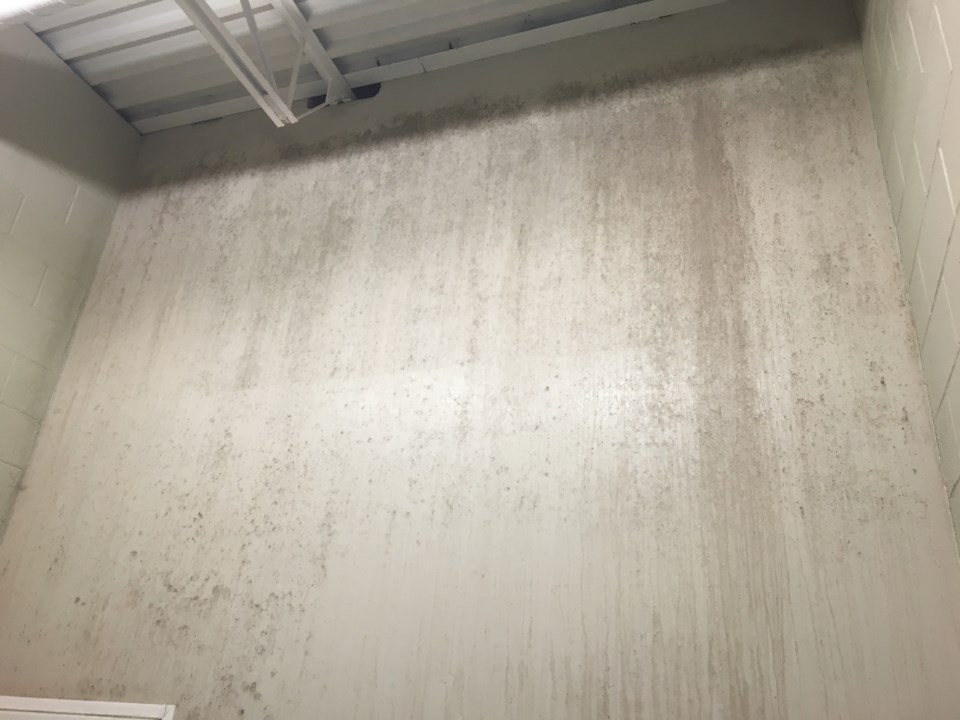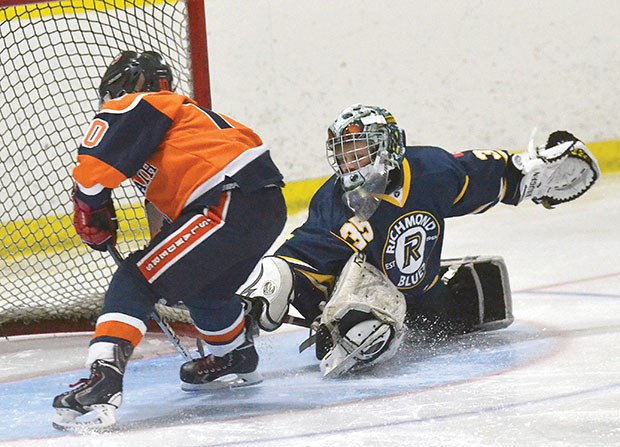The Richmond Ice Centre is plagued by a persistent mould problem and has not had a seismic assessment since it was built 23 years ago.
Those are two good reasons why the facility should be given a high priority when city planners complete an upcoming review of civic facilities, according to the chair of the Richmond Arenas Community Association.
“What needs to be done is a facilities assessment, just like at Minoru Arenas,” said Frank Claassen.
While noting he is unsure if the centre would meet today’s seismic standards and that no concerns have been raised otherwise, Claassen opined that major remedial work would “not be reasonable” considering the six-rink facility is “so close to its potential end of life.”
The centre’s lease expires in 2019 and the City of Richmond has the option to renew it twice, for five years at a time, up to 2029.
The mould problem has persisted for years, since at least 2013.
In August, 2013, as a result of complaints from arena employees, including one that resulted in a Workers Compensation Board file, WorkSafeBC, the provincial government body tasked with workplace safety, ordered the city to mitigate and stop the mould growth.
Employees had complained about “mould smells,” particularly inside the first-aid room and skate shop.
An airborne mould analysis was subsequently conducted by JMB Environmental Ltd. On Oct. 8, 2013, according to WorkSafeBC, the analysis concluded six rooms in the arena had above-normal airborne mould concentrations. The report noted the findings were only valid for that date and environmental factors could change throughout the year.
Following the WorkSafeBC investigation, the city cleaned the rooms and discarded mouldy material via a mould abatement company. A final post-remediation report in February 2014 showed the mould situation had been, at least temporarily, cleaned.
It was recommended by WorkSafeBC that an insulating (vapour barrier) wall be built to prevent moisture buildup over the long term. That’s because the temperature differences between the ice rinks and the offices and change rooms fostered moisture buildup on the walls.

To date, insulating walls have not been installed, but at least one is part of the 2016 municipal budget.
In the intervening 30 months since WorkSafeBC made its recommendations, city spokesperson Ted Townsend said staff clean the arena annually.
The Richmond News has observed mould and musty smells in several rooms in the arena and some walls with black residue appear to be painted over. Emails between arena employees indicate a cleanup was done last October.
“It’s that time of year again to clean some of the walls between the rinks. Mold is back…” reads one email.
Seafair Minor Hockey Association told the News members have also raised concerns about the mould.
According to the American Industrial Hygiene Association “modest wetting and drying” in buildings is common, however if it’s persistent it can lead to mould growth. Exposure to mould can lead to increased risk for respiratory symptoms, such as asthma, bronchitis and lung infections. Mould is particularly harmful to young children, seniors and those with pre-existing respiratory conditions.
Coun. Bill McNulty, RACA’s council liaison, said he was unaware of the mould problem and that the ice centre would be included among an estimated 50 facilities that will be soon (no specific timeline) reviewed by city staff as part of a long-term facilities review.
The centre was built mostly for minor hockey practices. It was expanded from four rinks to six, shortly thereafter, due to high demand for ice.
It’s unclear if a new facility could be built on the same property. The land is part of the Riverport Entertainment and Business Park, which was sold for $103 million to a Real Estate Investment Trust in the second biggest commercial or industrial real estate transaction in Metro Vancouver in 2015.



